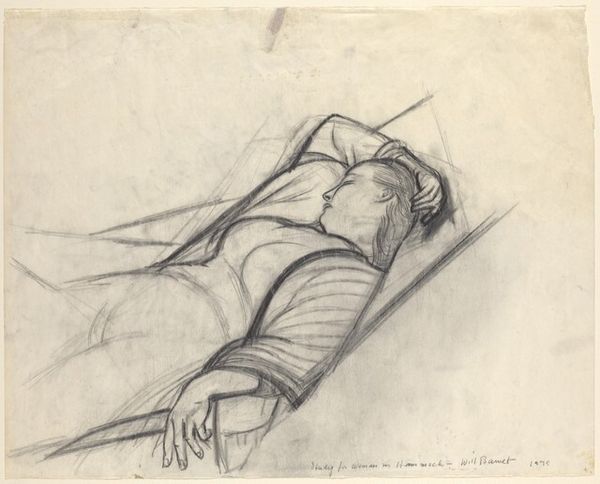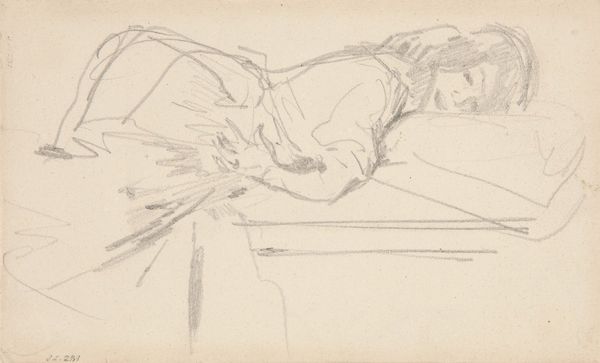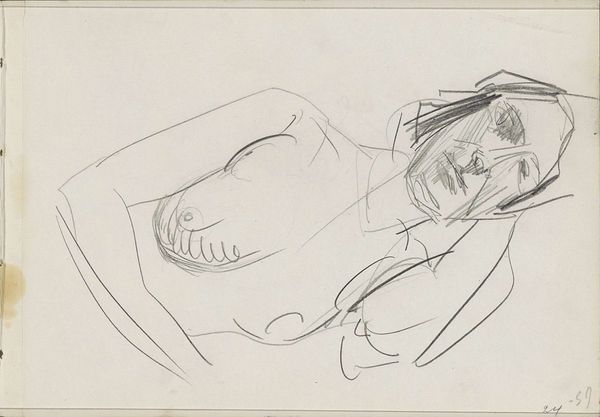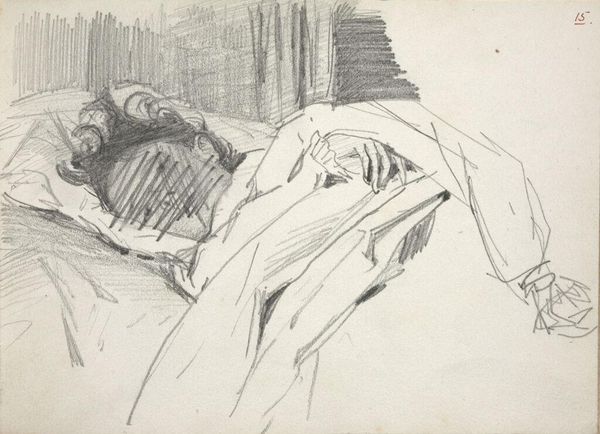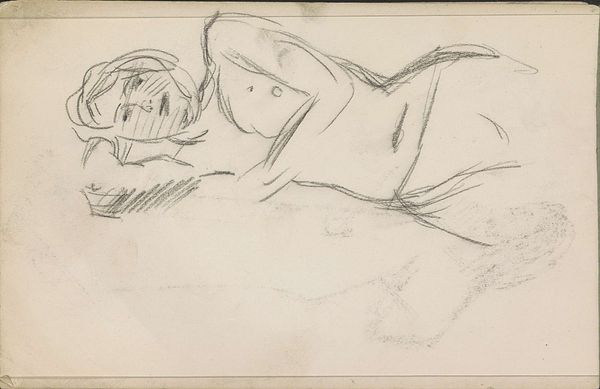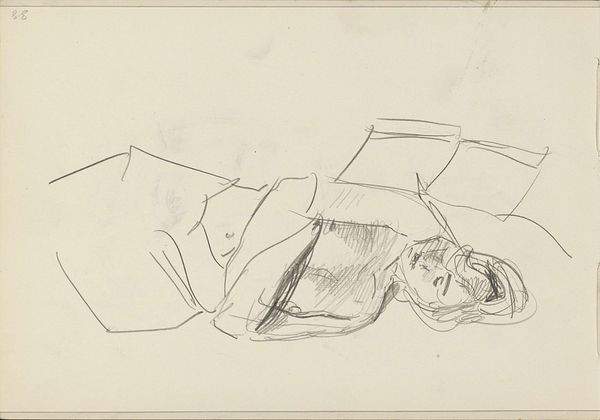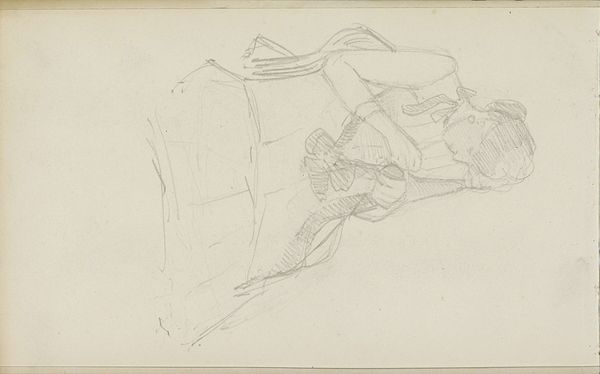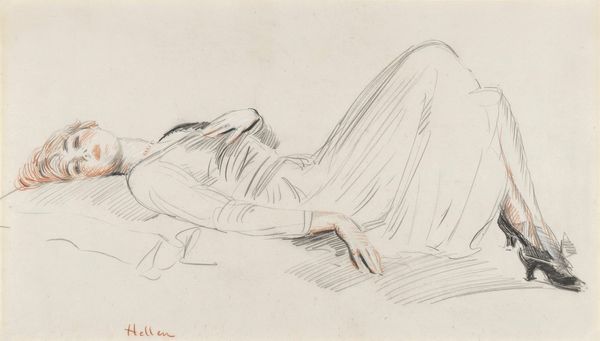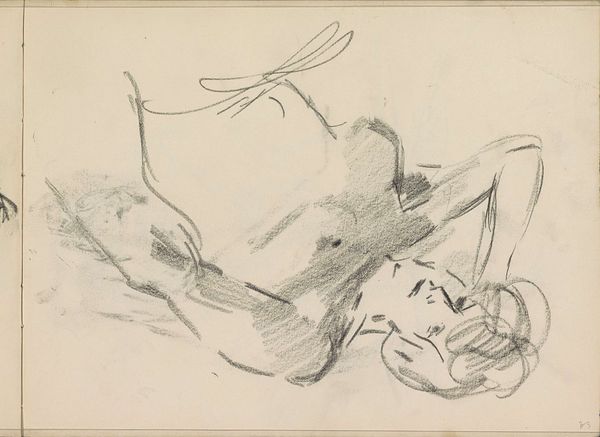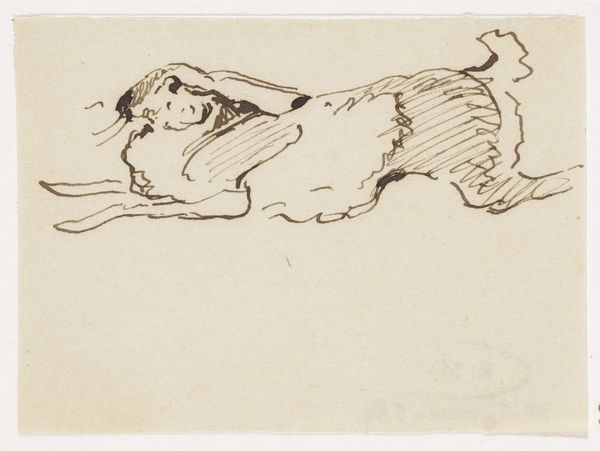
drawing, pencil
#
portrait
#
drawing
#
pencil sketch
#
landscape
#
figuration
#
pencil
#
sketchbook drawing
#
portrait drawing
#
realism
Dimensions: height 267 mm, width 384 mm
Copyright: Rijks Museum: Open Domain
Curator: Hendrik Johannes Haverman's "Resting Young Woman on a Sofa," created sometime between 1867 and 1928, strikes me as profoundly intimate, wouldn't you agree? Editor: Intimate is one word for it. To me it's more a question of access to materials at hand—the accessibility of pencil and paper inviting a swiftness and lightness in its production. Curator: And yet, there’s a powerful universality in that image of repose. Sleep has been a powerful symbol for artists, writers and poets for millennia. Note the subtle arrangement of her hands, clasped gently in what seems a protective gesture. Do you not sense echoes of vulnerability and serenity? Editor: Vulnerability, perhaps, but let's not forget the material conditions here. Pencil on paper, likely a readily available, inexpensive combination at the time of its creation. That choice dictates a certain aesthetic. The artist is choosing, whether consciously or not, to employ common materials. We must think about who would have the access and resources to acquire art supplies versus the sitter whose social status affords leisure for a midday nap. Curator: Agreed. But surely, beyond the economic considerations, this work invites interpretation on the psychology of rest, an archetype we recognize across time and cultures? Sleep represents not just physical rest but also escape, oblivion. It holds meaning far transcending mere accessibility of tools. Editor: But to look closer: the roughness of the sketch itself tells a story of production. How many times was that pencil sharpened? The lines overlap—how many passes were made at capturing the precise curve of the model's face, or the fall of the drapery. These marks speak directly of Haverman's hand and effort, transcending that one sleeping woman. Curator: It is difficult to deny that a study of such detail draws you into the symbols being represented. It seems more about our individual relationship with exhaustion and dreaming, regardless of societal standing, but through our modern gaze. Editor: Perhaps we can both find common ground then. This work invites a broader questioning of our own consumption—do we value accessibility or a more elaborate production, as it provides rest in terms of what it takes and how society affects this rest? Curator: An intriguing parallel. The drawing does compel contemplation of fundamental symbols that reach into our inner understanding and reflection, prompting deeper inquiry on these issues, both of which would seem quite accurate. Editor: I agree!
Comments
No comments
Be the first to comment and join the conversation on the ultimate creative platform.
